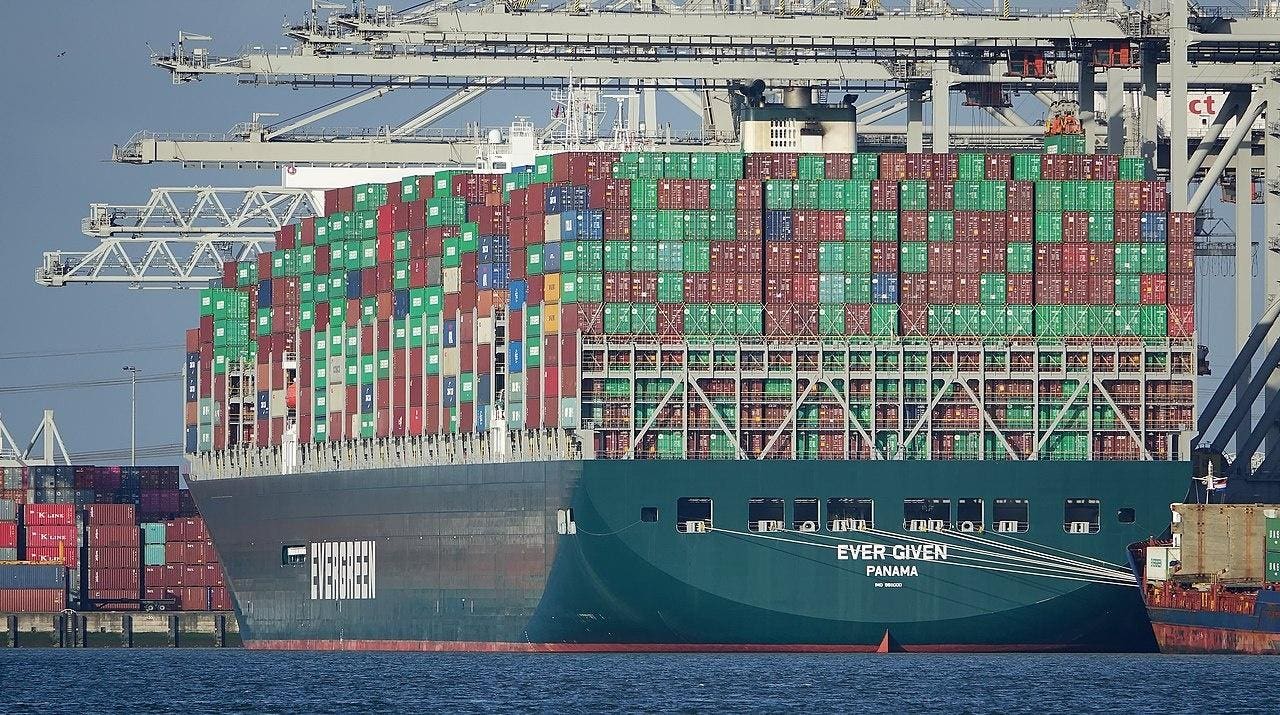The tide has gone out for U.S. commercial shipbuilding and shipping. It may never return.
Last month, 19 legislators from both chambers of Congress sent a letter to President Biden warning of grave consequences if the United States does not reverse the erosion of its commercial maritime industry. Among other things, they want the president to designate the sector as critical infrastructure.
But unlike other critical infrastructure such as the electric grid, this piece of the economy barely exists anymore.
At the beginning of 2023, China had 1,749 large oceangoing commercial vessels under construction in its domestic shipyards. America had five.
At the beginning of 2022, China had 1,708 vessels under construction. America had three.
U.S. production of commercial vessels—at least, the kind used in international trade—has nearly ceased.
While China consolidates its role as the world’s leading commercial shipbuilder with 40% of global output, the United States produces about one-fifth of one percent of global output.
The U.S.-flagged merchant fleet is similarly debilitated. At the beginning of 2023, only 177 oceangoing commercial vessels flew the American flag. The number of vessels flying the Chinese flag was over 5,000.
Not surprisingly, the ranks of U.S. merchant mariners capable of crewing such vessels has dwindled. Indeed, were it not for laws that reserve domestic oceangoing commerce for U.S. ships, the profession would probably disappear.
This is not a new problem. America suffered a severe shortage of domestic shipping at the beginning of World War One also, thanks in part to the high cost of tariff-protected U.S. steel.
But the United States has become a much bigger player on the global stage since then, and far more dependent on foreign-produced minerals and manufactured goods.
So, whereas the shipping challenge in 1914 was how to get U.S. exports to Europe, the challenge today in an emergency would be how to obtain imports vital to the functioning of the domestic economy.
There are plenty of large commercial vessels engaged in global trade—by some measures nearly 60,000—but almost none of them fly the U.S. flag or are crewed by U.S. citizens. So how available would they be in wartime?
The answer would depend on the nature of the conflict. The fact that over a thousand such vessels are owned by U.S. interests does not assure their availability, because their foreign crews would have something to say about sailing into harm’s way.
The U.S. Navy has detailed plans for how it could tap the commercial fleet to move U.S. warfighters and their gear in a conflict, but in any prolonged campaign it would need to divert vessels and mariners from their peacetime pursuits.
It’s anybody’s guess what would be left of the nation’s commercial supply lines to places like Europe and Asia.
This is a crisis waiting to happen. China’s shipbuilding and shipping complex is so huge that Navy Secretary Carlos Del Toro told Congress last year a single Chinese shipyard had more construction capacity than the entire U.S. industry.
A chart released by U.S. Navy Intelligence indicated Chinese shipbuilding capacity is over 200 times that of America. Meanwhile, much of the trade between Asia and America is conducted on Chinese-controlled vessels—some of which are owned outright by the Beijing government (which also owns many of the shipyards).
America’s role in commercial shipbuilding and shipping thus has become so modest that it is an open question whether the domestic industry can survive.
Because U.S. ships and mariners are so much more costly than their counterparts in other countries, any effort to stabilize the domestic sector would require decades of subsidies.
Having allowed the industry to sink to such a low ebb, it is hard to imagine Congress now will reverse course and launch a multi-decade rescue package.
If it doesn’t, though, America could find itself unable to sustain a major war effort in the future.
For all its disabilities, the commercial shipbuilding and shipping sector really is critical infrastructure. Unfortunately, what’s left of this national asset is in critical condition.
Read the full article here





